Tennessee Valley Authority
Introduction
Text-to-speech Audio
Images
The TVA Towers, viewed from the Island Home Airport in Knoxville, TN, USA. The Tennessee River is in the foreground.

Browns Ferry Nuclear Power Plant
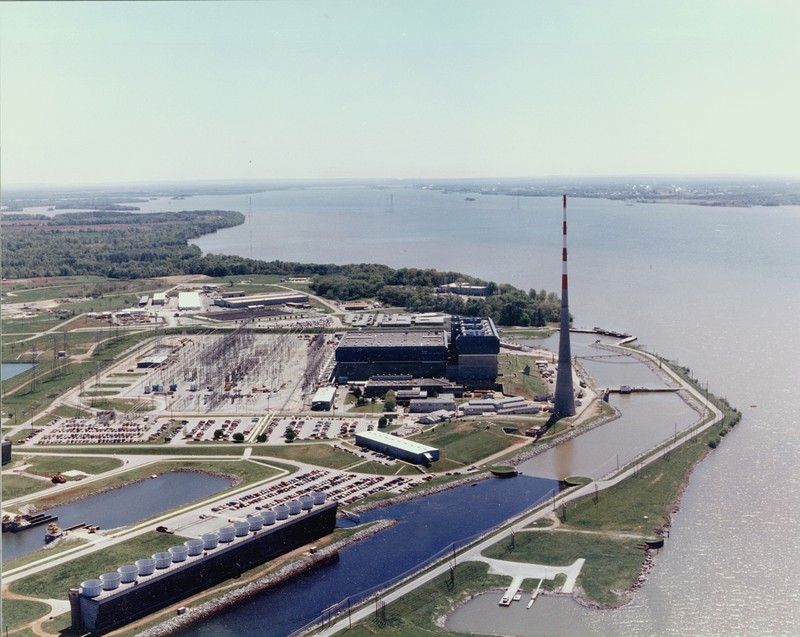
South Holston Dam
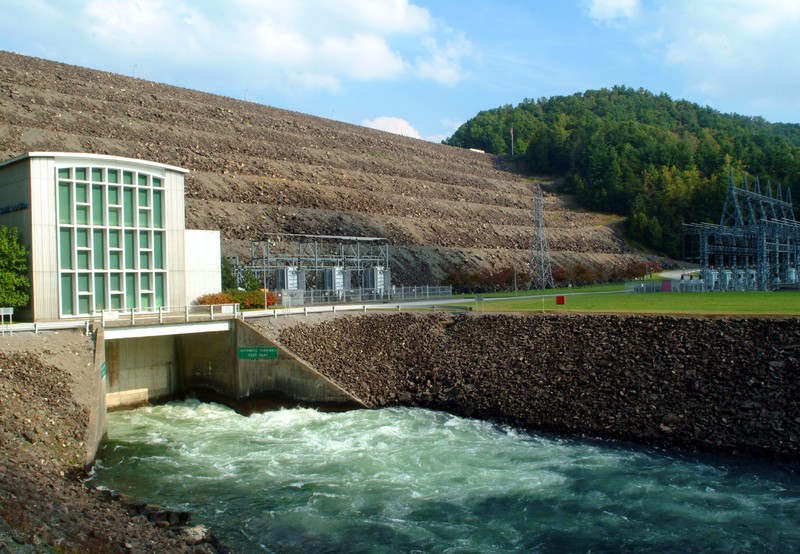
TVA wind turbines on Buffalo Mountain in eastern Tennessee

The logo of the Tennessee Valley Authority

The flag of the Tennessee Valley Authority
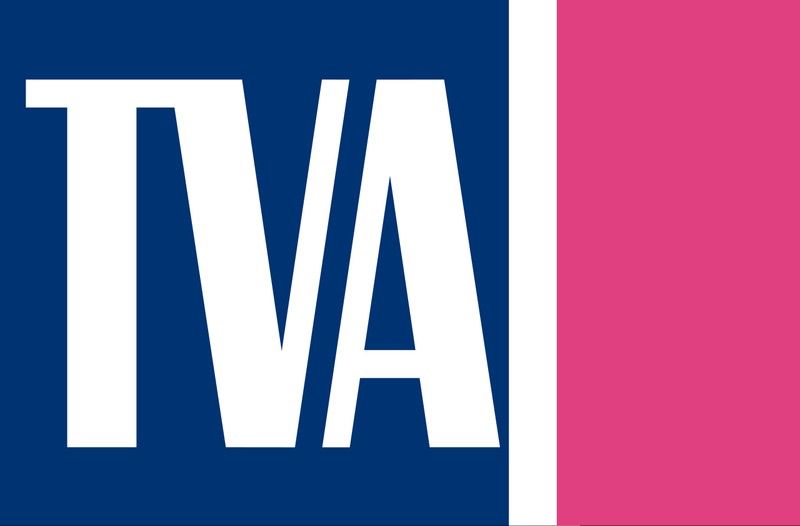
TVA service area
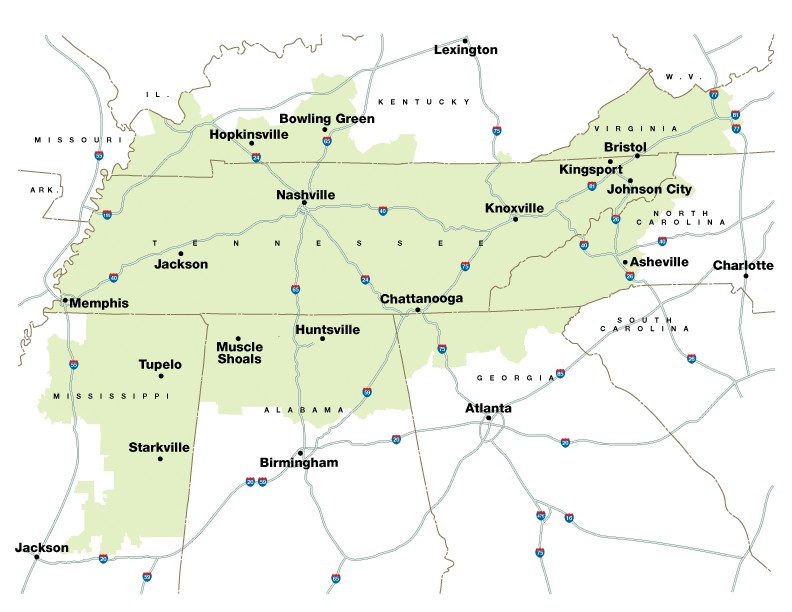
TVA electricity sign at the Franklin D. Roosevelt Presidential Library and Museum in Hyde Park, NY
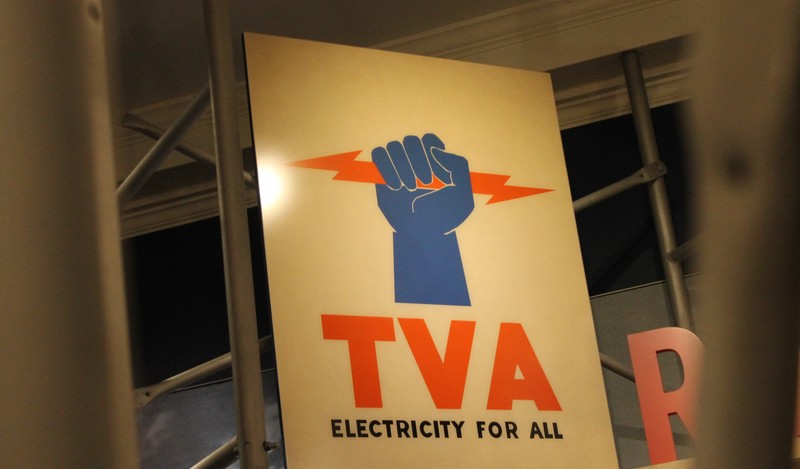
President Franklin D. Roosevelt signing the TVA Act (1933)
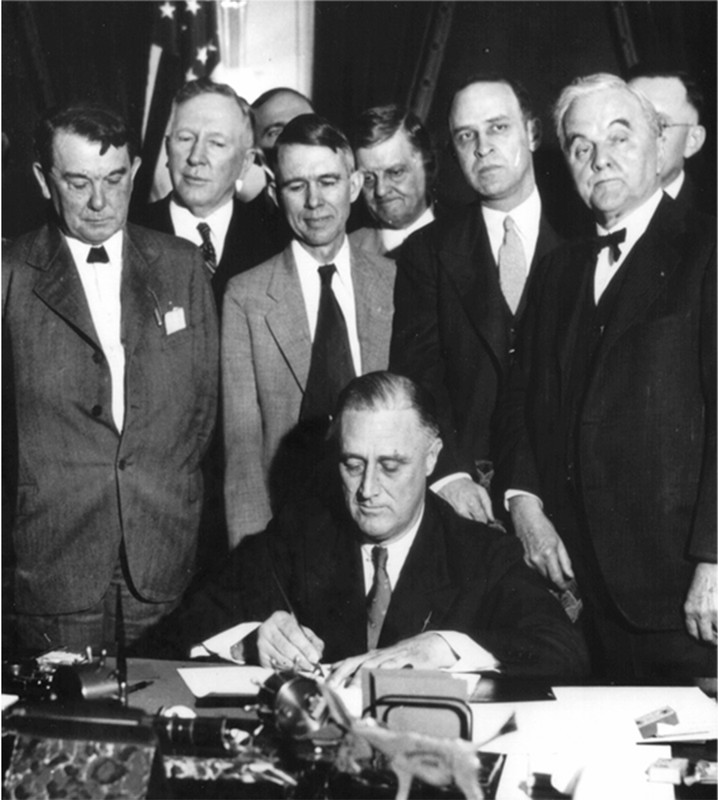
TVA's first board in 1933 (left to right): Harcourt Morgan, Arthur E. Morgan, and David Lilienthal
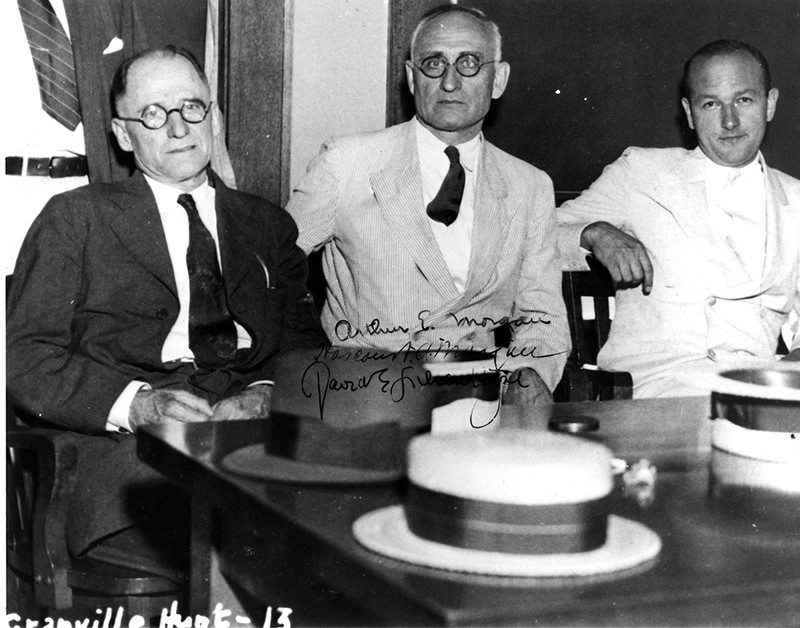
Backstory and Context
Text-to-speech Audio
The Tennessee Valley Authority Act was passed by Congress and signed by President Franklin Delano Roosevelt on 18 May 1933. Created as one of FDR’s New Deal programs, the TVA was designed to help modernize the Tennessee Valley, one of the hardest-hit regions in the Great Depression. The Muscle Shoals project was the source of the main inspiration behind the TVA. The Muscle Shoals project, fervently sponsored by Senator George Norris (R-Nebraska), was based on the idea that privately owned utility companies could not be trusted to adequately bring electricity to consumers. Norris managed to gain passage of the Muscle Shoals Bill in 1931, but President Herbert Hoover vetoed it, denouncing it as socialistic. The federal government, upon Roosevelt taking office, bought and absorbed a multitude of private utility companies in the Tennessee Valley into the TVA.
Senator George Norris got both houses of Congress to pass the Muscle Shoals Bill in 1931, to build a dam owned and operated by the federal government in order to provide government-produced electricity at affordable rates. Both presidents Calvin Coolidge and Herbert Hoover believed that the private sector should do the job, but Norris deeply distrusted privately owned utility companies. In fact, Norris once blocked a proposal by Henry Ford in the early 1920s to acquire control of a large portion of water-power resources around the upper Tennessee River. Ford received plenty of criticism for his offer. The Merchants Association of New York described Ford’s offer as an undisguised subsidy designed for strictly private purposes to the detriment of competing unsubsidized industries. However, then-Secretary of Commerce Herbert Hoover and Secretary of War John W. Weeks pointed out in August 1921 that the government could not possibly accept any other bid besides Ford’s, given that the others were from irresponsible sources.
Ford defended his offer, explaining that one of his underlying reasons for his interest in Muscle Shoals was eliminating the cause of war: gold. The Detroit industrialist believed that Wall Street international bankers created wars on occasion to raise interest rates from low rates of interest common in peacetime. Yet, a day later Ford shifted his blame of all of the evils international bankers commit to Jews. Of course, Ford had expressed anti-Semitism before, but this time he declared Jews were to blame for starting the Great War and, perhaps an even more bizarre claim, the American Civil War.
Today, the Tennessee Valley Authority operates a massive amount of power plants across the Tennessee Valley. These include six fossil fuel plants; three nuclear plants; 29 hydro plants; one pumped storage hydroelectric plant; nine natural gas combustion turbine gas plants; eight natural gas combined cycle gas plants; one diesel generator site; 15 solar energy sites; and one wind energy site. The TVA is currently 54 percent carbon-free and has plans to increase wind and solar energy from a three percent share to ten percent. The TVA’s first and largest nuclear power plant is the Browns Ferry Nuclear Plant near Athens, Alabama. Opened in 1974, Browns Ferry was the first nuclear plant in the world capable of producing over 1,000 megawatts, or one billion watts. Browns Ferry uses three boiling-water reactors and has 1,400 full-time employees onsite. Additionally, Browns Ferry accounts for ten percent of TVA’s total generation capacity. In northeast Tennessee, the TVA built the South Holston Dam on the South Fork Holston River. Dam construction began in 1942, but was halted until 1947 and completed in 1950. In 1991, a weir was built below the dam to add oxygen to the river to sustain habitat for aquatic insects, vegetation, and fish when the dam is not generating electricity. In terms of renewable energy, Buffalo Mountain in eastern Tennessee is home to three small and 15 large wind turbines. The small turbines were installed in 2001 with the large ones being installed in 2004 after a positive reaction to the first installment. The large turbines are capable of generating 1.8 megawatts of power with all of Buffalo Mountain producing 29 megawatts that power approximately 3,800 homes.
The TVA adopted an approach called integrated resource management. This strategy, used even through the present day, focused on studying issues the TVA has faced through their broadest context. Specifically, these issues include, but certainly are not limited to, power production, navigation, flood control, malaria prevention, reforestation, and erosion control. The TVA, in order to tame the Tennessee River floods, improve agricultural practices in the Tennessee Valley, and bring adequate electricity to the rural south, required some sacrifices that many contended were not worth the benefits of the TVA’s work. The right of eminent domain was given to the TVA, forcing many landowners to relocate. In fact, three entire towns including cemeteries had to be moved elsewhere. Additionally, over 15,000 families were displaced and had to be relocated. Some families, such as the Randolph family, adamantly refused to discuss the very notion of moving or cooperating with the TVA.
The story of the Randolph family’s extreme interaction with the TVA is both humorous and depressing. The Randolph family lived in a two-room shack in very bad condition. The house was made out of logs and riddled with large cracks and holes in the walls and floors where cold air could seep in. The sky can even be seen through some parts of the roof. The house had no toilet facilities and, upon a TVA worker’s visit to the family, the Randolph’s four-year-old daughter, Wanda, proceeded to use the front porch for that very purpose. The worker described Mattie Randolph as a rather small, stocky, fiery, brown-eyed woman who was very clearly the dominating member of the family. Her husband, Jim, was a quiet, easy-going fellow with little to say about any family problem, even when inquired by his wife. As for their six children, the worker questioned why or how they seemed happy. All of them were dirty, lacked enough warm clothes, and had nothing to play with. Jim had diabetes and heart trouble, which forced his wife to work even while pregnant with her seventh child in 1934 and 1935. However, the family was given a bad recommendation for cooperation, industry, and resourcefulness by the Temporary Emergency Relief Administration (TERA). Yet, Mattie began to clean up the house as TVA officials continued to visit, indicating that she perhaps enjoyed the notoriety she had gained and the trouble she was causing. The most interesting part of this story is Mrs. Randolph’s extreme stubbornness and refusal to cooperate. She reportedly said to the TVA worker on the first visit that “I’ll stay here until the water comes up and float down with it when it does.” She was later described as a very domineering, tyrannous, blustering soul. Interestingly, she was accused of threatening multiple TVA workers with a shotgun. Yet, one worker seemed to succeed in dissuading some antagonism by asking Mrs. Randolph to think of any was the worker could be of help during their visit the next week, to which Mrs. Randolph was believed to have felt keenly. There is no mention of a conclusion to the story, but the story managed to find itself a part of the 1960 movie, Wild River, in the form of a loose interpretation. The story can be read in entirety via the links section.
Sources
Greta Biddle to Mr. Alvin Zeigler. 9 January 1936. National Archives Identifier 656693. The Relocation of the Randolph Family. National Archives and Records Administration, College Park, Maryland. Accessed 16 April 2020. https://www.archives.gov/files/education/lessons//images/depression-randolph-relocation-memo.pdf.
Hubbard, Preston J. Origins of the TVA: The Muscle Shoals Controversy, 1920-1932 (Nashville, TN: Vanderbilt University Press, 1961). Accessed 16 April 2020. https://babel.hathitrust.org/cgi/pt?id=mdp.39015031695052&view=1up&seq=9.
Notes Relating to the Relocation of the Randolph Family. 11 December 1935. National Archives Identifier 656692. The Relocation of the Randolph Family. National Archives and Records Administration, College Park, Maryland. Accessed 16 April 2020. https://www.archives.gov/files/education/lessons//images/depression-randolph-relocation-notes.pdf.
Tennessee Valley Authority (website). Accessed 15 April 2020. https://www.tva.com.
Tennessee Valley Authority. A History of the Tennessee Valley Authority (Tennessee Valley Authority Information Office, 1983). Accessed 15 April 2020. https://tva-azr-eastus-cdn-ep-tvawcm-prd.azureedge.net/cdn-tvawcma/docs/default-source/about-tva/history/a-history-of-the-tennessee-valley-authority.pdf?sfvrsn=4307c423_2.
Tennessee Valley Authority Act of 1933. 48 Stat. 58-59, 16 U.S.C. sec. 831. Accessed 15 April 2020. https://tva-azr-eastus-cdn-ep-tvawcm-prd.azureedge.net/cdn-tvawcma/docs/default-source/about-tva/history/tva_act.pdf?sfvrsn=9a483658_2.
“The TVA and the Relocation of Mattie Randolph.” National Archives. Last Reviewed 15 August 2016. Accessed 16 April 2020. https://www.archives.gov/education/lessons/tva-relocation.html.
Wengert, Norman. "Antecedents of TVA: The Legislative History of Muscle Shoals". Agricultural History 26, no. 4 (1952): 141-47. Accessed 16 April 2020. www.jstor.org/stable/3740474.
Brian Stansberry (acquired from Wikipedia | https://en.wikipedia.org/wiki/Tennessee_Valley_Authority; shared under the Creative Commons Attribution 3.0 Unported license with no changes made | https://creativecommons.org/licenses/by/3.0/deed.en)
Nuclear Regulatory Commission (acquired from Wikipedia | https://en.wikipedia.org/wiki/Tennessee_Valley_Authority; public domain)
Tennessee Valley Authority (acquired from Wikipedia | https://en.wikipedia.org/wiki/Tennessee_Valley_Authority; public domain)
TVA Web Team (acquired from Wikipedia | https://en.wikipedia.org/wiki/Tennessee_Valley_Authority; shared under the Creative Commons Attribution 2.0 Generic license with no changes | https://creativecommons.org/licenses/by/2.0/deed.en)
U.S. Government (acquired from Wikipedia | https://en.wikipedia.org/wiki/Tennessee_Valley_Authority; public domain)
U.S. Government (acquired from Wikipedia | https://en.wikipedia.org/wiki/Tennessee_Valley_Authority; public domain)
U.S. Government (acquired from Wikipedia | https://en.wikipedia.org/wiki/Tennessee_Valley_Authority; public domain)
Billy Hathorn (acquired from Wikipedia | https://en.wikipedia.org/wiki/Tennessee_Valley_Authority; public domain)
Tennessee Valley Authority (acquired from Wikipedia | https://en.wikipedia.org/wiki/Tennessee_Valley_Authority; public domain)
Granville Hunt (acquired from Wikipedia | https://en.wikipedia.org/wiki/Tennessee_Valley_Authority; public domain)
